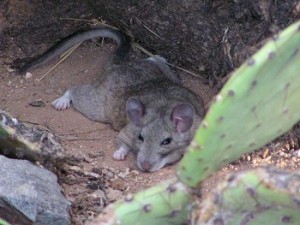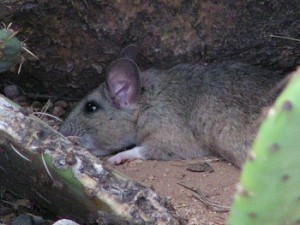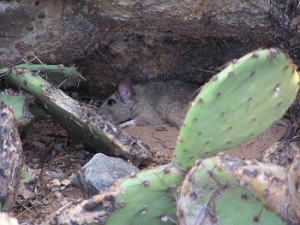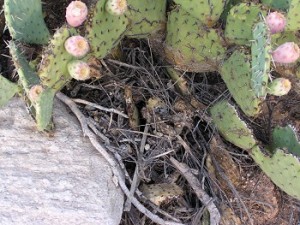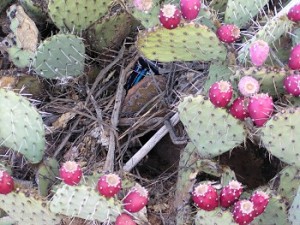The entrance to its nest is an interwoven array of sticks, cactus spines and a bewildering assortment of garbage it has picked up in its home construction activities…..
There are 22 species of Packrats, or Woodrats. The species shown here is Neotoma lepida , or the desert Woodrat, taken in the Sonoran National Park (East).
It is also found in the Mojave and Baja deserts. The photographs were taken in the early evening, as the Packrat begins to appreciate the slightly lower temperatures than 110 C during the afternoon.
The entrance to its nest is an interwoven array of sticks, cactus spines and a bewildering assortment of garbage it has picked up in its home construction activities.
They pick up bright attractive objects, including candy wrappers that careless visitors have dropped. Its home allows some protection from predators, by the use of cactus spines and cactus pads in its construction. The dense packing arrangement also shields the inside of the nest from the heat of the summer sun.
Although normally confined to the open desert regions, it will also take the opportunity to build its nest whenever it finds a suitable site. It does need to apply for a mortgage, but its just looks for a cool, safe, enclosed space from its predators. This includes lofts of homes built in the desert, and also in the engine compartments of cars where it can cause havoc with wiring and electrical connections!
Its food consists largely of cactus pads, nuts and seeds. It obtains virtually all of its water needs from succulent plants. Its natural predators include the coyotes, snakes, and foxes.
